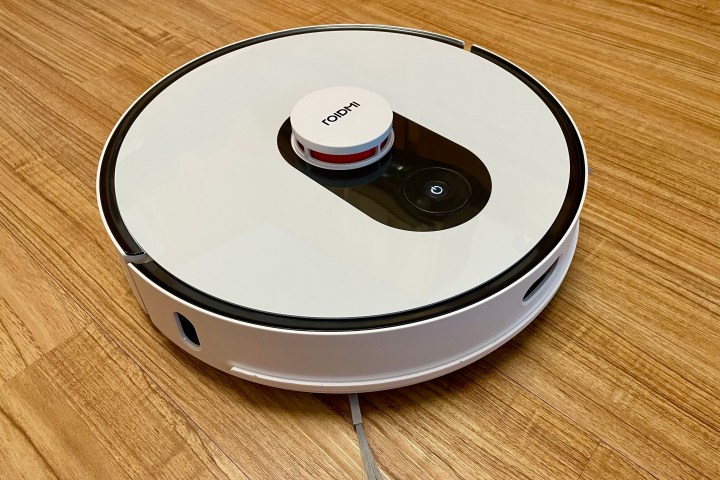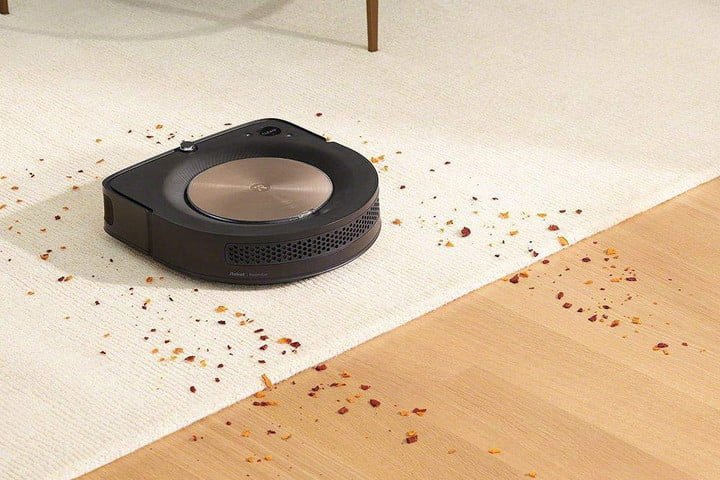If you’ve been shopping for a robot vacuum, chances are you’ve stumbled across a few key buzzwords that illustrate the ins and outs of how these sentient Roomba cyborgs get our homes so clean. Beyond phrases we all know like “suction power,” “filtration,” and “mobile app,” one vacuuming buzzword that is seeing more limelight these days is “artificial intelligence” (often shortened to A.I.).
You may be asking yourself: What exactly is an A.I. vacuum in the first place? And furthermore, what differentiates an A.I. vacuum from the assortment of other robot models that fill page after page on Amazon? You’re not alone in your wonderment, which is why we’re here to clarify the A.I. vac labeling.
How does an A.I. vacuum work?

There’s plenty of deep science that goes into A.I. vacuum fundamentals, but let’s focus on some of the surface-level technologies that give these bots their distinctive performance advantages (and big-digit prices).
When you unbox an A.I. vacuum, one of the first things you’ll be prompted to do is pair it with your home Wi-Fi. Then, you’ll want to download the companion app that you’ll use to control and customize the vac. After unboxing and connecting, the A.I. vac is going to take a detailed scan of your home, creating a “vacuum map” that your companion cleaner will reference when cleaning. This same map will also be available for you to examine and manipulate in the vac’s mobile app.
An A.I. vac creates an elaborate cleaning blueprint using one of two mapping methods: A laser-guided analytics scan of your residence, known as Lidar (Light Detection and Ranging), or a camera-centric scan called vSLAM (Visual Simultaneous Localization and Mapping).
When bot shopping, you may have noticed a raised bump-out on the top of several robot vac brands (like the Xiaomi Roidmi model below) and/or a camera lens somewhere on the main deck of the vacuum. The former is a Lidar laser housing, the latter a vSLAM camera.
What makes an A.I. vac different from a regular robot model?

In the early days of robot vacs, and continuing into today’s more basic robot models, bots were designed with basic sensors and a core algorithm or two to help the vacuum navigate around the house. If you’ve ever seen a budget bot in action, you’ll know these models rely a lot on trial and error while maneuvering around your domicile. Once you activate a basic bot, it will float around your floor, capturing whatever debris it can … until it bumps into a piece of furniture.
While the rubberized bumpers of many robot vacs help to prevent any serious damage to home decor and other belongings, the onboard sensors are typically only intelligent enough to tell the vacuum that it’s banging into something when it’s actually banging into it. You may even have to jump in to pull your vac out of a tight spot. That’s where the power and accuracy of an A.I. vacuum really come into play.
An A.I. vacuum combines the map scans mentioned above, along with deep-learning algorithms and object identification to make for a faster, more thorough, and safer robot vac experience.
Lidar and vSLAM mapping: A better, safer clean
While there are basic sensors built into these bots for avoidance purposes, Lidar and vSLAM mapping give your vac an elaborate reference point when cleaning. In fact, you should find that A.I. vacs tend to clean your home faster and in straighter lines compared to some of the more rounded sweep maneuvers of basic robot models.
Additionally, deep learning and object identification let your A.I. vac know what to steer clear of when vacuuming. Gone are the days of shoelaces and power cables being sucked into your robot vac’s brush-head.
In a nutshell: An A.I. vac uses mapping and adaptive learning tech to tell your bot what to clean, where to clean, and when to clean. While sensors and algorithms are not entirely absent from many of today’s robot vacs, low- and mid-tier models typically do not come packed with the intuitive learning tools of more advanced A.I. models.



